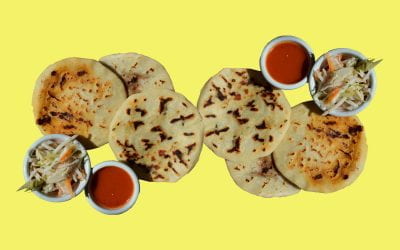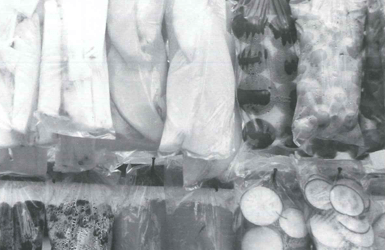The Best Little Restaurant in Latin America
Rana Verde in Callao, Peru
I have only one rule for dining at the Rana Verde: always take a pair of binoculars. That’s because the view is so interesting that it needs to be examined, a piece at a time, through every course.
The Rana Verde sits on pilings at the end of a dock in Callao, Peru. It’s not for evening dining, but for an almuerzo peruano, a lunch that lasts all afternoon. It has a roof, and three sides, but the fourth side is open to the harbor of Callao, Peru’s major port. Boat traffic of every type passes nearby-an occasional sailboat, a sculler, a decrepit launch with a put-put engine that gives harbor tours for 10 soles. Farther out, there are sailboats and power boats at their moorings, much like any group of pleasure boats in the States. Bolicheras, the fishing boats that are the backbone of Peru’s vast fishing industry, and a scattering of old hulks that you would seldom see in a U.S. harbor make interesting viewing for the restaurant goer, not to mention Peruvian Navy warships and enormous freighters entering or leaving the main maritime terminal that handles most of Peru’s foreign trade. Anchored on the far horizon, dim shapes of large shipshulks?are so far off that even the binoculars fail.
The glare of the sun from the water, the gentle breeze and a Pisco sour?that Peruvian gift to world civilization that is something like a daiquiri but really nothing like anything else?combine to make time seem suspended. Gulls and cormorants wheel by. If you’re lucky, also making an appearance will be an Inca tern, that most beautiful of sea birds.
As for the cuisine, I must to confess to limited familiarity because I always order the same thing. The Rana Verde is a ritual, and for me part of the ritual is conchitas a la parmesana followed by corvina a la chorrillana. The conchitas, giant scallops, are served on the half shell, baked with a covering of Parmesan cheese. The fish of the day will be either corvina (sea bass) or lenguado (flounder), both excellent whitefish.
A la chorrillana, named for the fishing port to the south of Lima, adds onions and tomato to the dish.
You stagger out of the Rana Verde in the late afternoon and feel the need for a walk after three hours of eating and drinking. There around the corner is the malecon of La Punta, awaiting your stroll. When you get back to Lima the day is shot, but it doesn’t matter. Food is ritual.
Spring/Summer 2001
Shane Hunt is Professor Emeritus of Economics at Boston University and a DRCLAS Affiliate. He first visited Peru in 1963, but didn’t find the Rana Verde till 1989.
Related Articles
Salvadoran Pupusas
There are different brands of tortilla flour to make the dough. MASECA, which can be found in most large supermarkets in the international section, is one of them but there are others. Follow…
Salpicón Nicaragüense
Nicaraguan salpicón is one of the defining dishes of present-day Nicaraguan cuisine and yet it is unlike anything else that goes by the name of salpicón. Rather, it is an entire menu revolving…
The Lonely Griller
As “a visitor whose days were numbered” in Buenos Aires, Argentina, he tossed aside dietary restrictions to experience the enormous variety of meat dishes, cuts of meat he hadn’t seen…



